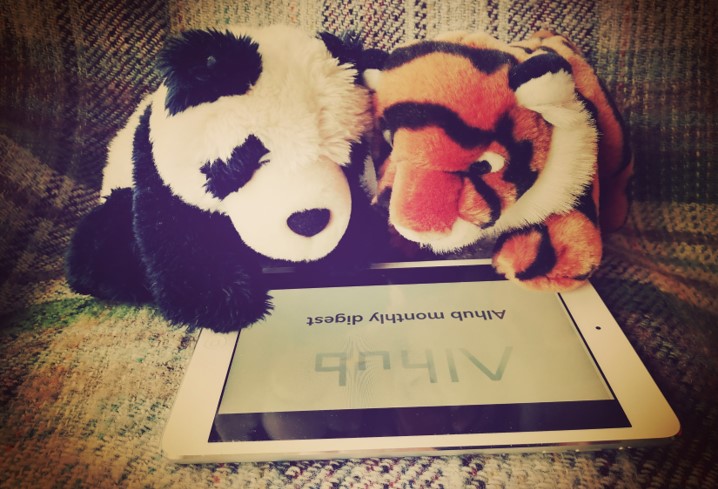
ΑΙhub.org
AIhub monthly digest: February 2021

Welcome to the second of our monthly digests, designed to keep you up-to-date with the happenings in the AI world. You can catch up with any AIhub stories you may have missed, get the low-down on recent conferences, and generally immerse yourself in all things AI.
Focussing on climate action
You may be aware that we are running a focus series on the UN sustainable development goals (SDG). Each month we tackle a different SDG and cover some of the AI research linked to that particular goal. In February it was the turn of climate action.
We interviewed Amy McGovern who leads one of the inaugural NSF AI Institutes, namely the NSF AI Institute for Research on Trustworthy AI in Weather, Climate, and Coastal Oceanography (or AI2ES for short). She spoke about setting up the Institute, some of the collaborations and research, and her vision for future developments.
We also chatted to Konstantin Klemmer, a PhD student and Communications Chair for Climate Change AI (CCAI). He told us more about the volunteer-run CCAI, how he got involved, and about some of their projects and events.
Jan Drgona, also part of the CCAI core team, and his colleagues Aaron Tuor, Vikas Chandan and Draguna Vrabie, are researching thermal dynamics of buildings. In this post they detail their physics-constrained deep learning methodology.
Angela Nebot wrote about fuzzy logic and how that can be used to develop climate models to inform policy makers.
You can read all of the contributions to the climate action focus series here.
Good health and well-being
Our focus in January was on another UN sustainable development goal: good health and well-being. For each of our focus topics we’ll be producing a summary article. In addition to highlighting some of the content from our series, these articles will aim to give an overview of the field and provide links to research articles and other resources. You can read our summary of AI in healthcare here.
On the topic of health, researchers involved in the CLAIRE COVID-19 initiative published this paper about their experiences. The authors offer seven recommendations on how to best organise such efforts and collaborations in the context of managing future crises.
Drug discovery and development is an extremely complex and costly process, and different machine learning approaches have been investigated to help with this. Among these techniques, those using knowledge graphs have shown considerable promise. In A review of biomedical datasets relating to drug discovery: a knowledge graph perspective, the authors detail publicly available data sources containing information that could be used in constructing drug discovery knowledge graphs.
AAAI conference
Another month, another big AI conference. February saw the turn of AAAI, which was held (virtually, of course) from 2-9 February. As well as summarising the conference in the form of tweet round-ups (here and here), we covered the best paper awards and Regina Barzilay’s plenary talk. Before Regina’s talk, she was officially presented with her Squirrel AI award. This was announced last year and awarded for her work on cancer diagnosis and drug discovery.
If you are interested in watching the invited talks, AAAI have now made the recordings available to the public. To see the videos, follow the links to slideslive for each talk from the AAAI speaker webpage.
Bio-inspired machine learning
In this interview, Eleni Vasilaki (Head of the Machine Learning Group, Department of Computer Science, University of Sheffield) talks to AIhub Ambassador Anil Ozdemir about her work on bio-inspired machine learning and artificial intelligence. The topics explored include neuromorphic computation, insects and active learning.
Other articles, books, comics and videos that caught our attention this month
Patterns, predictions, and actions: a story about machine learning. This textbook by Moritz Hardt, Benjamin Recht covers a whole range of topics including decision making, representation, optimization, generalization, datasets, causality, causal inference, sequential decision making, and reinforcement learning. This is all done with an eye on historical context and societal impact.
Claytone Sikasote and Antonios Anastasopoulos present a preprocessed, ready-to-use automatic speech recognition corpus for the low-resourced language Bemba in BembaSpeech: a speech recognition corpus for the Bemba language. Bemba is spoken by over 30% of the population in Zambia.
On her YouTube channel, Beril Sirmacek has a weekly round-up of her “research picks”, highlighting interesting things that she has found in the field. She also hosts regular interviews with people in AI.
You may remember the stunningly illustrated Mirror, Mirror comic book from Falaah Arif Khan and Julia Stoyanovich, which considers a whole range of topics including ethics, accessibility, bias and regulation. Well, the good news is that the duo are back, this time with Eleni Manis on board, and have created a follow-up called Fairness and Friends. In this edition the authors cover automated decision systems, the concept of algorithmic fairness, and much more. The team are keen to ensure that their work is as accessible as possible. Visit the Data Responsibly website to find French and Spanish versions of Mirror, Mirror, and full transcripts for all the comic books.
Sports fans will be interested in this article from University of Southampton researchers. In Optimising long-term outcomes using real-world fluent objectives: an application to football, the authors present a novel approach for optimising tactical and strategic decision-making in the beautiful game.
And, finally
This cool video by Leo Isikdogan sets AI-generated art to the music of Erik Satie (Gymnopédie No.1). This is the latest in a series from Leo, who describes how he creates the art images here.
tags: monthly digest









